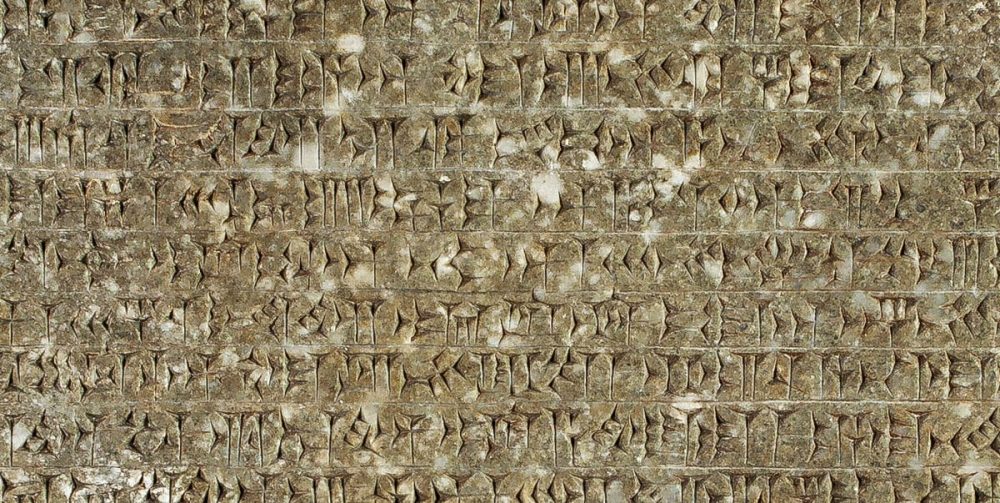If theories held by academic Egyptologists regarding the age and builder of the Sphinx are not universally accepted, why do we blindly accept we know when the Great Pyramid was built, and who built it?
It is generally acknowledged that the Great Pyramid of Giza, the only ancient wonder of the world still standing today, was built by Pharaoh Khufu of the Fourth Dynasty some 4,500 years ago. Egyptologists maintain that the Pyramid–and all pyramids in Egypt for that matter–was built as the eternal resting place of the Pharaoh.
This is supposedly a tradition that started a few hundred years back by the Pharaoh of the Third Dynasty, king Djoser.
Mainstream Egyptologists dictates that the Egyptian pyramids were the direct result of the evolution of the mastaba tomb. The first Egyptian Pyramid is believed to be the imposing monument standing at the Saqqara necropolis, and designed and built by Djoser’s royal Vizier and architect Imhotep.
The Step pyramid–a six-stepped, four-sided structure–is regarded as the earliest colossal stone building in ancient Egypt, as well as the earli4est large-scale cut stone construction in history.
Nonetheless, this is wrong since, during the time the Step pyramid was being built, a civilization in present-day Peru erected colossal stone pyramids as well. In fact, the pyramids of Caral may even predate the pyramids of Egypt.
Furthermore, there is a nearby enclosure–not far from the Step Pyramid–dubbed as Gisr El-Mudir. This is a massive enclosure wall built entirely of stone. Egyptologists have agreed that this massive structure–even visible in satellite images–predates Djoser’s step pyramid, which makes it the earliest colossal stone building in Egypt.

Its exact purpose remains a puzzle. As I’ve explained in this article, Gisr El-Mudir has a rectangular shape and measures 650 by 350 meters. The walls of the structure consist of two outer double walls, which were constructed using roughly hewn limestone, located 15 meters apart.
Whatever the purpose of the stone enclosure wall may have been, the Step Pyramid is seen as the first of its kind, a structure that completely changed ancient Egyptian architecture. Although revolutionary and one would expect that similar monuments would follow, the Step Pyramid was not so popular in Egypt, probably because it was by no means an easy-to-build monument.
Although several Pharaohs that followed Djoser attempted to build a similar pyramid complex, none of them succeeded. In fact, it wasn’t until the Fourth Dynasty of Kind Sneferu that Egypt saw the birth of a new pyramid: the Pyramid at Meidum.
Bear in mind I am here describing the mainstream timeline of Egyptian pyramid building.
Sneferu is credited by Egyptology as having built three great pyramids, something that, if true, would make him the greatest pyramid builder in the history of ancient Egypt. It is believed that the founder of the Fourth Dynasty built the Pyramid at Meidum and the Red and Bent Pyramid at Dahshur.
Just as the Step Pyramid of Djoser revolutionized Egyptian architecture, the monuments commissioned by Sneferu did even so.
Sneferu’s architects are credited with designing and building Egypt’s first successful smooth-sided Pyramid, the Red Pyramid. This monument is Egypt’s third-largest Pyramid and remained the largest and tallest Pyramid in Egypt until the completion of the Great Pyramid at Giza.
Eventually, Sneferu’s son Khufu came to the throne, and early in his reign–according to Egyptologists–he commissioned his own Pyramid. Designed and built by Hemiunu, the Great Pyramid is enshrouded in mystery.
Awkward timeline

Egyptologists are convinced of two things: that the Great Pyramid was a tomb, and that it was built during the reign of Khufu.
Although this may sound plausible, there are a few things we should take into consideration. There are no blueprints of the Pyramid anywhere, and there are no written accounts of how the Pyramid was built. There is nothing ever found in Egypt that describes how the Pyramid was erected. Bear in mind that the so-called Merer’s Journal, often cited as “evidence of how the pyramid was built,” is far from evidence at all. In fact, the ancient papyri detail the transport of stone from Tura to Giza. This stone may have been used for various purposes, and may also have been used to refurbish the Pyramid. There are no specific lines that tell us, “the stone from Tura was used in the construction of the pyramid.”
Despite a lack of records, Egyptologists believe that the Pyramid was constructed over a twenty-year period by gangs of workers during Khufu’s reign. This claim is based on a mark in an interior chamber of the Pyramid, which was supposedly left there by a work gang. This mark makes reference to Khufu. However, this mark has often been dismissed by skeptics as a 19th-century production.
The tomb of Khufu has never been found. There are three known chambers inside the Pyramid–although there are possibly two unconfirmed rooms that are still unexplored–and one of them houses a gigantic sarcophagus.
When modern scholars entered the Pyramid, they found this chamber empty. The king’s mummy has never been found, and neither has the mummy of Sneferu, Djoser, Menkaure, or Khafre been found. All of them built pyramids. The absence of mummies in the pyramids has been explained by scholars in the past.
They say that the contents of the pyramids–including the mummies–were stolen in ancient times by grave robbers.
Curiously, 19th century Egyptologists who explored Giza, the pyramids, and the Sphinx had a different point of view about the chronology of ancient Egypt.
The Great Sphinx of Giza, for example, is widely acknowledged as having been carved during the Fourth Dynasty reign of Khafre, despite no records or evidence pointing to that fact.
This is perfectly described by an expert Egyptologist called Selim Hassan, who explored the Sphinx and its surrounding areas in 1949. Hassan wrote the following in his book:
Taking all things into consideration, it seems that we must give the credit of erecting this, the world’s most wonderful statue, to Khafre, but always with this reservation: that there is not one single contemporary inscription which connects the Sphinx with Khafre; so, sound as it may appear, we must treat the evidence as circumstantial, until such time as a lucky turn of the spade of the excavator will reveal to the world a definite reference to the erection of the Sphinx.
Interestingly, Flinders Petrie, another expert in Egyptology wrote in 1883 regarding the state of opinion regarding the age of the nearby temples, and by extension the Sphinx:
The date of the Granite Temple [Valley Temple] has been so positively asserted to be earlier than the fourth dynasty, that it may seem rash to dispute the point.
Another expert, E.A. Wallis Budge wrote in his book “the Gods of the Egyptians” (1914):
“This marvelous object [the Great Sphinx] was in existence in the days of Khafre, or Khephren, and it is probable that it is a very great deal older than his reign and that it dates from the end of the archaic period, circa 2686 BC.”
So if various experts in the field questioned initially the chronology of the construction of the Sphinx, temples, and possibly pyramids, why are we so convinced today that we know it all? Why do we still believe with such a convincing state of mind that the Great Pyramid of Giza was built by Khufu?
If there is lacking evidence that points towards this, why do we still refuse to at least acknowledge the possibility of the Pyramids of Giza dating back further in time than what is maintained by experts today?
If theories held by academic Egyptologists regarding the age and builder of the Sphinx are not universally accepted, why do we blindly accept we know when the Great Pyramid was built, and who built it?





